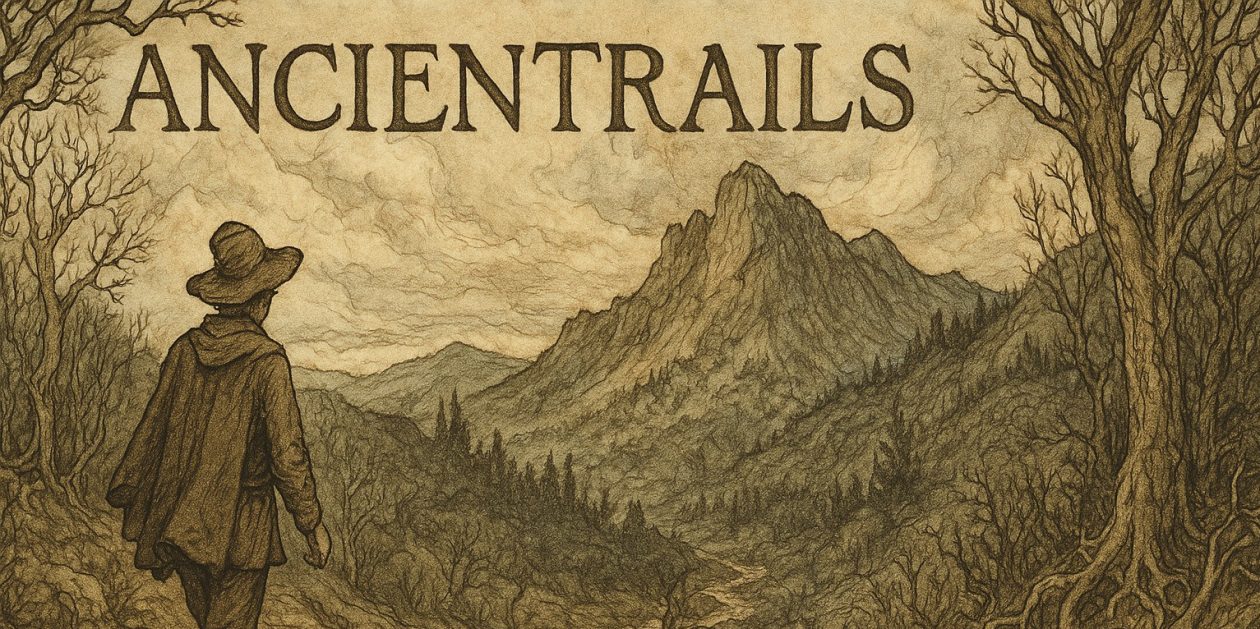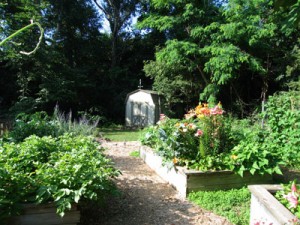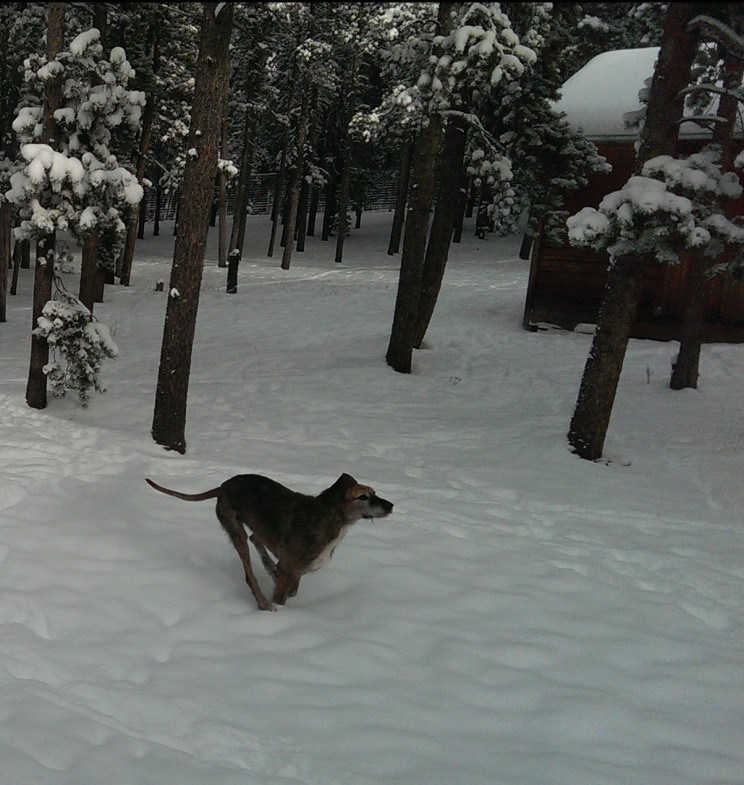 Lughnasa and the Michaelmas Moon
Lughnasa and the Michaelmas Moon
Tarot: Nine of Stones in the Wildwood Deck
Meaning (according to the Wildwood Tarot book-WTB):
Reverence for past wisdom and sacrifice. The ability to relate to ancient knowledge and pass on the lessons of ancestral memory and ritual.
Let me throw in here, too, Ovid. And, my interest in pre-Socratic philosophers like Thales, Anaximander, Heraclitus. Dante. The Tao. The early world of Hinduism. Christianity and Judaism. Those very early shamanic faiths of the Mongols, of the Japanese (Shinto), the Koreans.
Even anthropology. My interest in anthropology was to find the way of other peoples, to know and understand them as much on their own terms as possible. Travel as well. The learning inherent in being the other.
I’m not a syncretist. I’m not an everybody has something to teach us sorta guy. Though there’s a sense in which that’s true. I’m not trying to find the one truth that snakes through all the traditions. There isn’t one. And, yes, I’m pretty sure of that.
There is though this truth. The human body, its limitations and potentials, does remain pretty much the same over time. The brain and its evolution has hardwired certain ways of responding to the world around us. Though there have been dramatic climatic changes like the ice age, the sorts of challenges the world provides in its various regions remain at least similar even today.
What I’ve done, often without knowing it, is to immerse myself in the thought ways, the life ways, the ritual ways of so many different cultures over long periods of time and in very different geographical and geological conditions that I feel like a citizen of multiple cultures, yet beholden to none of them. Including, perhaps most of all, my own.
The tricky part for those of us raised in the West and in the Judaeo-Christian tradition can be capsulized in one word: progress. Progress assumes linear time. Progress assumes one culture can evaluate others qualitatively. Nineteenth century France is better than, nineteenth century England. Or, China’s civilization is superior to everyone else’s outside the Middle Kingdom. Or, we, the USA, will make the world safe for democracy, the obvious best form of government.
Progress both puts blinders on us, makes jingoists of us all, and imagines an unproven and unprovable idea: that next year, next day, next minute things will get better. By whose standards? Mine? Yours? Theirs? The citizens of ancient Ephesus? Of X’ian. Of Kyoto.
Of course, central heating beats a fire in the middle of the hut with a hole in the top to let smoke out. Of course, driving in a motorized vehicle is easier than walking or riding a horse. Of course, air conditioning is preferable to suffocating heat. You can extend this list.
But. Is central heating progress? Depends on the fuel, in one way of looking at it. Natural gas, propane, and heating oil are all common fuels. Think. Climate change.
Same question about driving and air conditioning.
Humans tend to favor the thing they have and know. So, today is better than yesterday.
 Meaning (according to the Wildwood Tarot book-WTB):
Meaning (according to the Wildwood Tarot book-WTB):
Reverence for past wisdom and sacrifice. The ability to relate to ancient knowledge and pass on the lessons of ancestral memory and ritual.
As a 1960’s radical, anti-establishment, pushing for new political, military, economic, sexual, intellectual mores, to consider myself one who reveres past wisdom, ancient knowledge? No. No. No.
Yet. There I was studying Socrates. Zoroaster. Ovid. Greek history. Biblical literature. Dante. Taoism. The history of ancient civilizations like Assyria, the Qin dynasty, Middle Kingdom Egypt. Not only studying. Learning. And in that learning, unbeknownst to me, at least partially, being shaped by that learning.
When I went to seminary, I saw the utility of the prophetic tradition in Judaism and Christianity. It could be used to press for change on behalf of the widow and the orphan, the enslaved, the oppressed, the poor and the hungry. I considered this tradition, that of the prophets of Ancient Israel, the real gem in the long years since the death of Jesus.
It was. And, is. But. There is another jewel there, too. One only accessible to the meditator, the reader of scripture, the ascetic, the one willing to face the root of the faith. To get burned by its heat. This is the faith of the Russian Starets, the Welsh peregrinators, mystics like St John of the Cross and Meister Eckhart. And, not faith. Not really.
Why? Because it involved and affirmed an actual experience of the numinous.
My inner world got shaped, in the end, more by this strain of the Judaeo-Christian tradition. Though. Again, I was only partially aware of that at the time.
When I fell too far away from the very idea of theology, of religious institutions, I went into a long period of quiet. I sold my commentaries, no longer engaged in lectio divina, or used the Jesus prayer.
Camus came back to me. Life is absurd. Without meaning. Death is final, extinction. To live is a choice. One that can be altered.
The Great Wheel came into my life sort of through a back door, a way of understanding Celtic thoughts and motivations. But when Kate and I moved to Andover and our long horticultural, beekeeping, canine loving life really began, the Great Wheel slowly seeped into my thinking about the garden, about the life of dogs and people, about the hives and their superorganism.
That was what I had been prepared for. Staring at the root of an ancient faith. I had the inner tools to accept the Great Wheel as the genius of a culture, one that had clear application to what I did every morning with hoe and spade.
Gradually I came to see that this ancient religious calendar spoke as forcefully to my spirit as the Gospel of Luke, as the prayers of Meister Eckhart. More forcefully at that point.
That was what led me to a bare knuckle spirituality, stripping away the accretions to the Great Wheel that had come from well-meaning, but in my view, silly, Wiccans and Druids.
I saw the Great Wheel, and when I did I saw it through Taoist influenced eyes, as not a belief system but as a metaphor with its feet planted in my garden. It was there, right before my eye. Beltane to Lughnasa. To Samain. To the Winter Solstice.
I had embraced an ancient way, a way I had learned from study and practice. I am, sort of, a traditionalist.
So, Nine of Stones. Hear ye, hear ye. Yes, sir!



 On the way home I stopped again at the Chicago beef food truck; it’s parked on my way home. Two hot dogs with pickle, mustard, and relish. Two chili cheese dogs. Ruth and Gabe stayed the night on Wednesday. We all love hot dogs.
On the way home I stopped again at the Chicago beef food truck; it’s parked on my way home. Two hot dogs with pickle, mustard, and relish. Two chili cheese dogs. Ruth and Gabe stayed the night on Wednesday. We all love hot dogs. Eight of Swords: Gonna write about this in the main text. Because I resisted this one. Victimization? Sense of being trapped? No way out? The first card I’ve drawn since the Tarot/Kabbalah class began that didn’t make sense to me. I read a few interpretations, relooked at the card. Nope, not me.
Eight of Swords: Gonna write about this in the main text. Because I resisted this one. Victimization? Sense of being trapped? No way out? The first card I’ve drawn since the Tarot/Kabbalah class began that didn’t make sense to me. I read a few interpretations, relooked at the card. Nope, not me. Tuesday gratefuls: Tony’s Market, always a treat. The receptionist at Hearing Aid Associates who fixed my hearing aid. A walk around my neighborhood. Kate, always Kate. Tom, coming for a visit. The Post Office. Mail. Money. Sarah and her organizing for the 18th. Rigel. Her funny character. Cool mornings.
Tuesday gratefuls: Tony’s Market, always a treat. The receptionist at Hearing Aid Associates who fixed my hearing aid. A walk around my neighborhood. Kate, always Kate. Tom, coming for a visit. The Post Office. Mail. Money. Sarah and her organizing for the 18th. Rigel. Her funny character. Cool mornings. I’ve been intending to get out and hike more. Decided to try a walk around the neighborhood. Could have done this a long time ago, but hadn’t. Nice homes. Meadows with white, yellow, and blue Wildflowers. Green thanks to the Rain. The route goes up and down with good variety, past my neighbors’ properties. Some with Horses. Most with Dogs. Views of Black Mountain. By the time I got back I was worn out and my leg, the p.t. focused right upper leg had begun to complain. That’s ok. Cardio.
I’ve been intending to get out and hike more. Decided to try a walk around the neighborhood. Could have done this a long time ago, but hadn’t. Nice homes. Meadows with white, yellow, and blue Wildflowers. Green thanks to the Rain. The route goes up and down with good variety, past my neighbors’ properties. Some with Horses. Most with Dogs. Views of Black Mountain. By the time I got back I was worn out and my leg, the p.t. focused right upper leg had begun to complain. That’s ok. Cardio. Thought about aging. Lenses in my eyes to replace my cataracts. A hole through my iris to drain fluid creating pressures. Glaucoma. An aid to my hearing. That five-year old titanium knee on the left side. The repaired Achilles tendon on the right. A missing prostate. This old car’s been in the shop many times, but keeps on running. May it last for a while longer.
Thought about aging. Lenses in my eyes to replace my cataracts. A hole through my iris to drain fluid creating pressures. Glaucoma. An aid to my hearing. That five-year old titanium knee on the left side. The repaired Achilles tendon on the right. A missing prostate. This old car’s been in the shop many times, but keeps on running. May it last for a while longer.
 Each minor arcana suit: pentacles, swords, wands, and cups has an association with one of the four elements. Wands Fire. Swords Air. Cups Water. Pentacles Earth.
Each minor arcana suit: pentacles, swords, wands, and cups has an association with one of the four elements. Wands Fire. Swords Air. Cups Water. Pentacles Earth. relationships. The plants, like spouses, need tending, nurturing. With thoughtful, regular care amazing things become possible. It allows for the wonderful moment depicted in this card where the work has gone well and the Plant flourishes. The relationship between Plant and gardener has succeeded. Will succeed. That’s the message of the six pentacles remaining on the vine. Further growth will come. A bigger harvest.
relationships. The plants, like spouses, need tending, nurturing. With thoughtful, regular care amazing things become possible. It allows for the wonderful moment depicted in this card where the work has gone well and the Plant flourishes. The relationship between Plant and gardener has succeeded. Will succeed. That’s the message of the six pentacles remaining on the vine. Further growth will come. A bigger harvest.



 The man, a pilgrim?, has had to leave this wonderful memory behind and now walks alone. Perhaps not wholly alone though. The card suggests to me that as he’s leaving, it is this memory that he’s carrying with him. A pleasant, joyful one. A time of innocent love made clear through a link to the natural world, to flowers and stars and attractive scents.
The man, a pilgrim?, has had to leave this wonderful memory behind and now walks alone. Perhaps not wholly alone though. The card suggests to me that as he’s leaving, it is this memory that he’s carrying with him. A pleasant, joyful one. A time of innocent love made clear through a link to the natural world, to flowers and stars and attractive scents.









 At our elevation the Lodgepole guard the Aspen whose golden leaves in the fall proceed their winter sleep. At lower elevations the Ponderosa, the Spruce stand guard. At the treeline ancient Bristlecone Pines patrol. In other parts of Colorado the Douglas Fir, the Engleman Spruce, the Pinon Pine, the Rocky Mountain Juniper, and the White Fir watch. The Great Spirit reminds us each Winter of the Evergreens special gift.
At our elevation the Lodgepole guard the Aspen whose golden leaves in the fall proceed their winter sleep. At lower elevations the Ponderosa, the Spruce stand guard. At the treeline ancient Bristlecone Pines patrol. In other parts of Colorado the Douglas Fir, the Engleman Spruce, the Pinon Pine, the Rocky Mountain Juniper, and the White Fir watch. The Great Spirit reminds us each Winter of the Evergreens special gift.


 I see two related, but different, relationships to the Winter Solstice in this story. The first, perhaps obvious, perhaps not, concerns the turning of the Great Wheel.
I see two related, but different, relationships to the Winter Solstice in this story. The first, perhaps obvious, perhaps not, concerns the turning of the Great Wheel. Magic. Earth Magic. The green covered burial mound is a chapel. The place of Morgan Le Fay, and the Green Knight may represent the older, nature focused magic, a magic that honored the chaotic reality of the natural world. A magic that confronts the civilized world of revels and knights and governments and agriculture. The organized world. Which can only understand death as finality, not as part of an ongoing cycle.
Magic. Earth Magic. The green covered burial mound is a chapel. The place of Morgan Le Fay, and the Green Knight may represent the older, nature focused magic, a magic that honored the chaotic reality of the natural world. A magic that confronts the civilized world of revels and knights and governments and agriculture. The organized world. Which can only understand death as finality, not as part of an ongoing cycle.